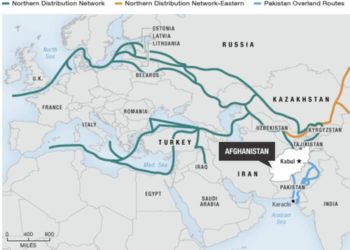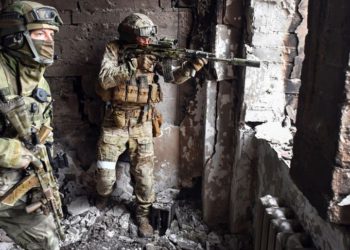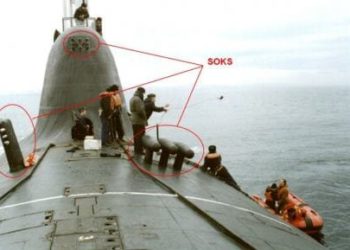Russian A2AD is a myth. The western community loves talking about Russian A2AD, those defensive bubbles NATO would have to pop to have a chance at winning a war against Russia. We can’t help but talk about A2AD when we talk about the S-300, S-400 and S-500 systems… And yet, A2AD does not appear anywhere in Russian military papers or publications! The reason is simple: anti-access area denial is not part of Russian doctrine as far as defending its airspace is concerned!

By talking about Russian A2AD, we are simply looking at Russian capabilities and trying to fit them into something we know or something we would do. The problem with this mode of thinking is that it is not because they are capable of doing it that they would automatically do so…
Defensionem is also guilty of this: In an article called “Battle of the Atlantic Cold War Edition” (https://defensionem.com/battle-of-the-atlantic-cold-war-edition), We explained how the Soviet Navy would have hunted US convoys crossing the Atlantic in case of a war between the Warsaw Pact and NATO. The reasoning is simple and was common within NATO planners for decades: In case of a war between East and West in Europe, The Soviets would have HAD to intercept those American convoys crossing the Atlantic and bringing much needed reinforcements and capabilities to Europe. It is exactly what the Germans attempted to do with their submarine fleet during WWII. This is probably what we would have done in those conditions. The Soviet Union had the capabilities needed to interdict NATO SLOC (Sea Lines of Communications), therefore, they would do it!
Well… In fact, no… They probably would not have done so! Not straight away, anyway. We assumed for years they would do so because this is what we would have done in the same situation! This is the logical step to take. We looked at their capabilities, we looked at a given situation, and we assumed this would be their doctrine! This was brought to our attention by a gentleman called Peter. He wrote a little post in our Facebook group and this got us thinking…
After a little research, we found online a CIA report (sanitised and declassified in 1999) on the subject. The report states that Soviet Doctrine dictated that the convoys themselves be ignored in the opening days of an East-West conflict. Instead, European ports could be disabled/damaged by missile attacks and their respective waters could be mined. Why? Because despite having significant anti-SLOC potential, the Soviets knew their vessels would naturally be vulnerable in the Atlantic and there would be losses. Why risk submarines in the middle of the Atlantic when missiles would be enough to destroy ports and terminals and could do the job from a stand-off ranges?! They also knew that convoy activity across the Atlantic would be minimal in the opening days of a conflict in continental Europe.
In case of a war with NATO, The Soviet Navy and Naval Aviations were to be employed first and foremost in a defensive manner, closer to home, arrayed in Bastions and interdicting NATO naval operations closer to their shores. This was its main objective.
In Soviet Doctrine, the battle in Central or Western Europe had to be won decisively within 7 to 10 days! 7 days to reach the River Rhine, 10 days to reach the Atlantic Coast. This was partly because of the NATO Operation Reforger which aimed to deploy 10 US divisions to Europe within 10 days in the event of a conflict with the Warsaw Pact. Therefore, according to Soviet military thinking, if the battle was not won within 7 to 10 days, the conflict would turn into a protracted war of attrition with a very high risk of nuclear escalation, first at the tactical level, then at the strategic one!
Only in this situation would Reforger and the Atlantic convoy have to be dealt with. But by then, it was surmised that NATO Naval Forces would have somehow been degraded already and that Soviet actions against NATO SLOC in the Atlantic would therefore be less risky. Submarines would be the Soviet weapon of choice to hunt those convoys, with Soviet Naval Aviation subsequently used as described in our article, closer to European shores… Still, the emphasis would first be with (potentially nuclear) tactical missile strikes on European ports and airports, then, should the use of nuclear weapons reach strategic level, with nuclear strikes on American ports, too. A mass Soviet sortie into the Atlantic in the opening days of a war, according to this CIA report, was not a priority for the USSR.
How did we get it so wrong for so long (and still do)? Well, instead of asking ourselves “What would the Soviets do?”, We asked ourselves “What would we do”!
History repeated itself when the West invented the “Gerasimov Doctrine”! In 2013, Valery Gerasimov, Chief of the General Staff of the Armed Forces of Russia, gave a speech in which he said: “A perfectly thriving state can, in a matter of months and even days, be transformed into an arena of fierce armed conflict, become a victim of foreign intervention, and sink into a web of chaos, humanitarian catastrophe, and civil war”. The following year, unmarked Russian servicemen (“little green men”) took over Crimea in a matter of hours while Eastern Ukraine became a battlefield where the lines between Pro-Russian Eastern Ukrainians, Russian volunteers and unmarked Russian servicemen were all blurred. Both incidents were accompanied by intense Russian activity online, from cyberwarfare to a full on (dis)information assault on all (social)media.
Commentators, journalists, bloggers and specialists alike compared Gerasimov’s speech and the actual events in Ukraine, linked both and concluded that what was happening in Ukraine was indeed a demonstration of what Valery Gerasimov had spoken about the previous year. The Gerasimov Doctrine was born and was presented as the blueprint for all future upcoming Russian attacks on the west.
The only problem, here, is that the Gerasimov Doctrine does not exist! We (Westerners) invented it! There are no mentions of such a doctrine in Russian military publications… Because what Gerasimov was talking about in his 2013 speech was actually how Russia perceives Western policies and activities! The principles highlighted by Gerasimov are seen within Russian military and political thinking as the Western recipe for “Regime Change” such as popular uprising similar to the “Arab Spring Revolts”, “Colour Revolutions” and “Euromaidan” coups. All the above are seen by Russia as Western operations aimed at undermining sovereign countries and plunge them into chaos. This involves non-aligned countries as well as countries in the Russian periphery (Russian Zone of Interests) such as the Georgian Rose Revolution of 2003, the Ukrainian Orange Revolution of 2004 and the Ukrainian Euromaidan Revolution of 2013.
Leadership/government toppled by those popular uprisings are then replaced (if possible) by leaders or governments more understanding and pliable to American interests. In the case of Georgian and Ukrainian protests/uprisings/coups, the aim for Washington is to get rid of governments that have a pro-Russian or neutral/lenient position toward Moscow and replace them with pro-West/pro-NATO leadership. The aim is to weaken Russian interests and Russian positions alongside its borders in the short term and for those countries to join NATO so the Alliance slowly surround Russia in the medium to long term. This is what Gerasimov explained with his 2013 speech.
When we read Gerasimov’s speech, we assumed we were reading a Russian recipe for its covert war against the West, when in fact, the speech was about the (perceived) Western blueprint for its war on non-aligned countries, with a potential to be applied against Russia!
We assumed wrong.
As for the events in Crimea and Eastern Ukraine, they have nothing to do with Gerasimov and all to do with “Maskirovka”: The Soviet/Russian Art of Military Deception, which has been part of the Soviet/Russian doctrine and Art of War for decades.
So, what about those Russian A2ADs, then?
Oops, we did it again… We looked at the capabilities of the Russian Air Defence Forces and we applied the “What would we do” method to what we saw. We came up with this anti-access area denial theory and ended up believing it was official Russian doctrine… Russians do practice A2AD at sea (Bastion Systems), after all. So why would they not practice it with their perfectly suited air defence platforms?
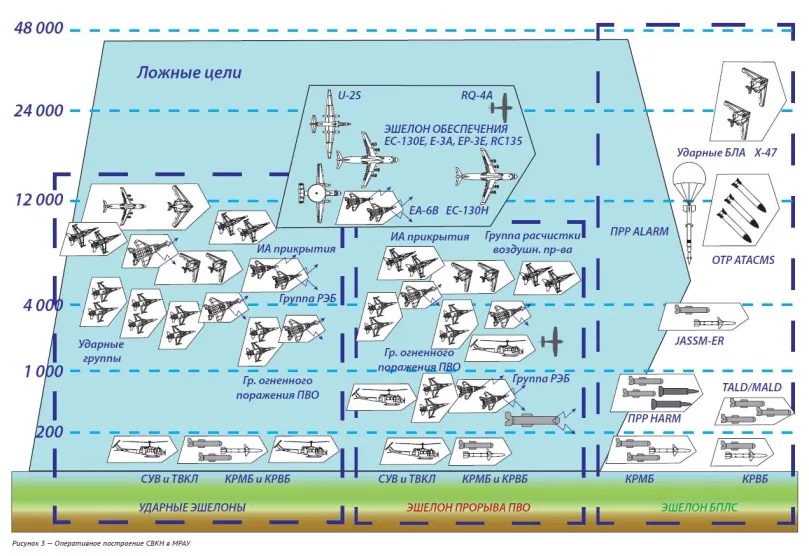
US (and Western) strategists and military thinkers started talking about A2AD in the early 2000’s when talking about China and North Korea. The term was used not to describe impenetrable air defence systems, but Chinese and North Korean short, medium and long range missiles that could target US bases and US (forward) zones of deployments in Taiwan, South Korea and Japan as well as target US Sea Lanes and logistic nodes in the region.
“Anti-access area denial” was then subsequently applied to Russian Navy “Bastion” or defensive boxes. In case of a conflict with a peer adversary, the Russian Navy, just like its Soviet predecessor, would focus on defence. The Russian surface fleet and a portion of its submarine fleet would deploy far enough from the Russian littoral that they could intercept enemy ships and prevent attacks on Russian infrastructure from stand-off ranges. At the same time, those vessels would not deploy too far, so as to stay within range of Russian Naval and Strategic Aviation. The deployment would in many cases be supported by the deployment of Russian Coastal AshM batteries acting as a second defensive layer behind those bastions or boxes.
Military strategists and writers therefore had a term already coined to describe what they saw when Russia started deploying S-300 batteries, networking several batteries, sensors and radars together and automatically layering those air defences with other medium and short range platforms. The myth of the Russian aerial A2AD doctrine was born! The first mistake was to copy Russian Navy Doctrine and paste it on Russian Air Defence Operations… The Russian Navy has a very specific sets of tasks and goals to fulfil which are not always in sync with those of the Russian army and Air Force.
Subscribing to said myth, however, would mean being extremely short-sighted and ignoring everything we know about Russian Strategy and Art of War.
Russian military thinking finds a lot of its roots in Soviet theories and strategies. The Russian Art of Wars, like its Soviet predecessor, is based on manoeuvre and combined arms. The main aim of the Russians, during a conflict, is to seize and subsequently hold on to the initiative. There is nothing passive about their attitude. Their actions are proactive and when needed, pre-emptive. While the Russian military has often shown itself to be deficient at the tactical level, they have proven to be excellent at the operational and strategic levels. This is where they focus their attention. On land, the Russian military would seek to keep the enemy unbalanced and retain the initiative using a blend of deception and aggressive offensive manoeuvres along the whole front (simultaneous combined arms operations across the theatre), often alternating the direction of their offensive thrusts. This was demonstrated in Georgia and in Syria (Syrian army advised by Russian instructors/advisors).
Why then would we expect their air defence to sit in place, operate alone and passively allow itself to be attacked again and again? Why would Russian doctrine thus be completely ignored in their Air Defence Strategy?
For a start, Russian Air Defence units are not tasked with defending portions of territories or geographical areas, but are instead tasked with defending assets!
In the words of Michael Kofman: “Russian capabilities are integrated via complementary offensive and defensive operational concepts. The defining elements include resilience to U.S. attack by absorbing and deflecting U.S. strikes with precision guided weapons, attrition of high-value assets through defensive and offensive operations, destruction of critical military or economic targets necessary to sustain the fight, and disorganization of the campaign by targeting command, control, and communications. Such strikes may be delivered serially, in single or small groups, but also on a larger scale, akin to Warden’s notion of “parallel strike,” the ability to simultaneously hit multiple critical targets to achieve a synergistic paralyzing effect on the military or political system”.
Should a war be imminent or unavoidable between Russia and a peer adversary, one can be sure Moscow would pre-empt any attack on its territory by attacks of its own. Missiles (ground to ground and air to ground) would be used to degrade or destroy the opponent’s command, control and communication nodes, as well as infrastructure (civilian and military) and troops and hardware concentrations… The Russians know the best way to destroy enemy aviation is to engage them on the ground. Opposition fighter planes would probably be engaged as they deploy to their forward bases. The Russian General Staff does not see warfare as being predominantly defence based. It is a proponent of an active defence strategy which involves preventive and pre-emptive attacks aimed at disorganising and inflicting attrition to the enemy.
As far as air defences are concerned, the Russians have regrouped into their Aerospace Forces integrated capabilities to deal with everything from low altitude to space borne threats. For them, this is all one and the same theatre. Capabilities involved therefore count (Tactical and strategic) Air Force assets (planes), Electronic Warfare platforms, Cyberwarfare units/capabilities, Land Based missile units (Surface to Surface), Air Defence Units (radars, sensors, Early Warning platforms and SAMs) and Anti-Satellite weapon systems. All those systems and units are integrated and layered in depth.
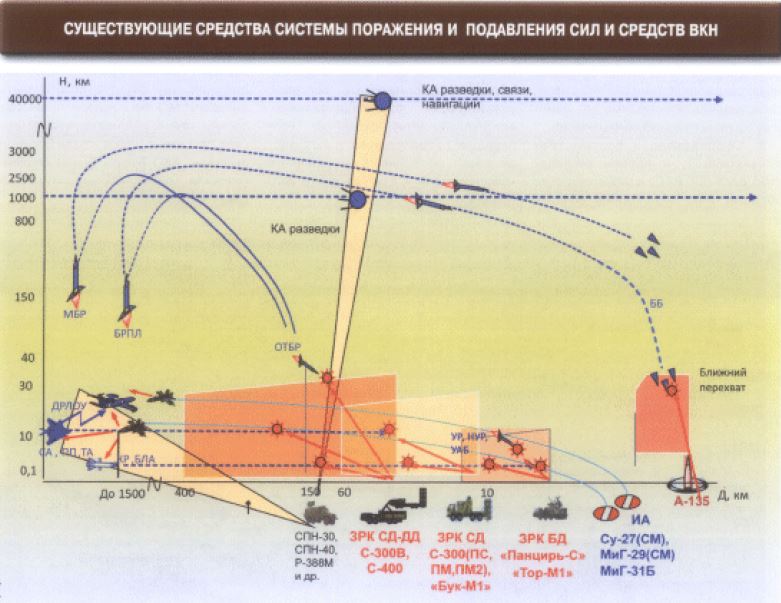
Russia would defend its airspace using a combination of defence and offence. Russian integrated, layered and overlapped Air Defence Systems and Air Force assets (fighters+interceptors) would act as a sponge, absorbing attacks, keeping the enemy busy and impose maximum attrition on its air force while Russian offensive tools (EW platforms, fighter planes and tactical and strategic bombers, Cyber attack units and missile units) would get to work on degrading an enemy’s infrastructure, organisation, ability to communicate, control, command and political will to fight through cost incurred.
Do also keep in mind that both the Russian Air Force (VKS) and the Russian army possess air defence systems (PVO-SV). While the VKS air defence guard static assets (Operational/Strategic level), the army’s PVO-SV rolls on the move with Russian land units and keep an air defence umbrella over them (Tactical level). Also keep in mind that while the PVO-SV (army air defence) platforms are usually medium to short range, they also work alongside (are integrated with) the army’s own Electronic Warfare units.
When talking about Russian aerial A2AD bubble, the Russian exclave of Kaliningrad is often mentioned. Air Force Gen. Jeffrey Harrigian (U.S. Air Force’s top commander in Europe) was even quoted as saying in September 2019: “If we have to go in there to take down, for instance, the Kaliningrad IADS [Integrated Air Defense System], let there be no doubt we have a plan to go after that”. This sums it all up: Russian Air Defence doctrine is consistently been depicted as organised in rigid local A2AD bubbles that would face attacks passively. A single domain that would face up to threats isolated from the rest of the Russian military. The reality is that the Russian response would be (potentially pre-emptively) proactive, offensive and felt across all domains and along the whole theatre.






